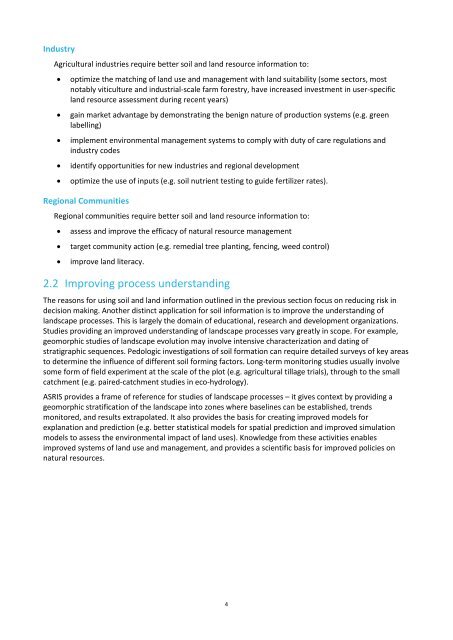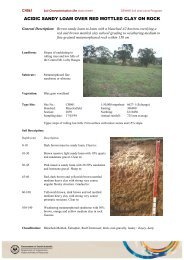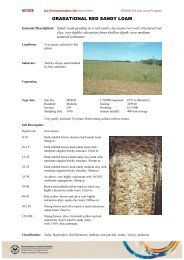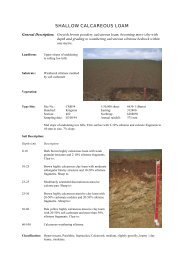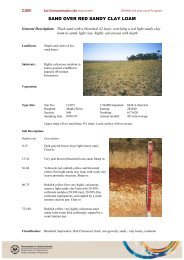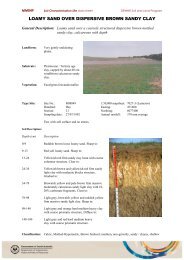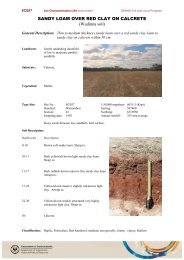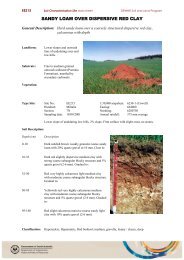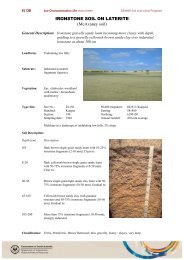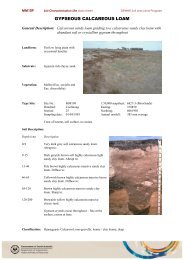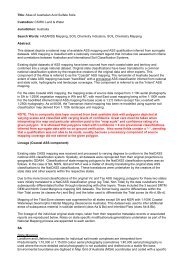Create successful ePaper yourself
Turn your PDF publications into a flip-book with our unique Google optimized e-Paper software.
IndustryAgricultural industries require better soil and land resource information to:• optimize the matching of land use and management with land suitability (some sectors, mostnotably viticulture and industrial-scale farm forestry, have increased investment in user-specificland resource assessment during recent years)• gain market advantage by demonstrating the benign nature of production systems (e.g. greenlabelling)• implement environmental management systems to comply with duty of care regulations andindustry codes• identify opportunities for new industries and regional development• optimize the use of inputs (e.g. soil nutrient testing to guide fertilizer rates).Regional CommunitiesRegional communities require better soil and land resource information to:• assess and improve the efficacy of natural resource management• target community action (e.g. remedial tree planting, fencing, weed control)• improve land literacy.2.2 Improving process understandingThe reasons for using soil and land information outlined in the previous section focus on reducing risk indecision making. Another distinct application for soil information is to improve the understanding oflandscape processes. This is largely the domain of educational, research and development organizations.Studies providing an improved understanding of landscape processes vary greatly in scope. For example,geomorphic studies of landscape evolution may involve intensive characterization and dating ofstratigraphic sequences. Pedologic investigations of soil formation can require detailed surveys of key areasto determine the influence of different soil forming factors. Long-term monitoring studies usually involvesome form of field experiment at the scale of the plot (e.g. agricultural tillage trials), through to the smallcatchment (e.g. paired-catchment studies in eco-hydrology).<strong>ASRIS</strong> provides a frame of reference for studies of landscape processes – it gives context by providing ageomorphic stratification of the landscape into zones where baselines can be established, trendsmonitored, and results extrapolated. It also provides the basis for creating improved models forexplanation and prediction (e.g. better statistical models for spatial prediction and improved simulationmodels to assess the environmental impact of land uses). Knowledge from these activities enablesimproved systems of land use and management, and provides a scientific basis for improved policies onnatural resources.4


